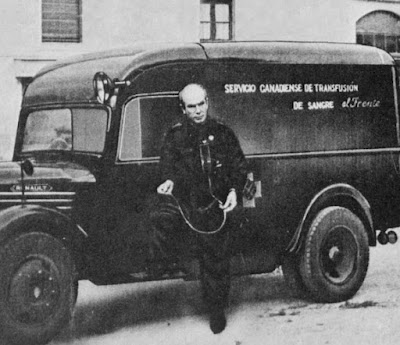Hi All,
Today I return to my Spanish Civil War project with this group of civilian refugees.
Sarah and I have been fortunate enough to visit both Cebere France and Malaga Spain in previous vacations. Both of these communities are set in beautiful locations, nestled along the Mediterranean coast, but both share a dark history in that they were also sites to horrible events during the Spanish Civil War. I've written about Cebere before, but I've been wanting to do something specific for Malaga for a while now.
In February 1937, the Mediterranean port town of Malaga found itself threatened by the rapid advance of Nationalist forces. In a state of panic, 120-150,000 people, composed of men, women and children, fled along the coastal road leading to Almeria, 200 kilometers away. In an act of barbaric cruelty, the Nationalists and their Italian allies harried the refugee column for days, submitting it to both air attacks and off-shore bombardment. Thousands were killed and wounded during the flight, in what many regard as a war crime exceeding that of the infamous bombing of Guernica.
At this time, a volunteer Canadian surgeon, by the name of Norman Bethune, was working in the area with is independent blood transfusion ambulance.
Hearing what was occurring along the coastal road, Bethune and his team quickly drove to the stricken column to give what assistance he could. For three days and three nights Bethune and his assistants helped evacuate some of the most vulnerable to Almeria, and then provided medical care to the most grievously wounded.
In 2007, the city of Malaga officially honoured Bethune's heroic and humanitarian acts with a commemorative plaque and by naming that portion of the Malaga-Almeria road, Paseo de los Canadienses (The Canadian Promenade). In order to visit the plaque and pay our respects, Sarah and I spent a nice afternoon cycling up to the promenade, situated just a few kilometers outside of Malaga.
Accordingly, I've done up these figures and vehicles in homage to those events in Malaga. The saloon car and most of the figures are from 1st Corps, the Phenom Granit ambulance is from Empress Miniatures and the poor fellow with the crutches is from Eureka Miniatures.
My only criticism of the 1st Corps range is that there are not many elderly people, nor any children depicted. I know it's tragic, but I think it is something that should be represented if depicting a refugee column. Maybe they will add some in future releases.
Small quibbles aside, I quite like the 1st Corps figures as they are well-sculpted and very characterful. Even more so is this wounded chap on crutches from Empress Miniatures - a brilliant mini.
The two vehicles were fun to work on, especially the saloon, with its roof haphazardly overloaded with all manner of assorted household items. You really get a sense of a harried family who have just thrown what they could atop their car and pushed off down the road.
I had to get a bit creative in sourcing something for Dr. Bethune. I ended up using a German officer figure from Artizan which I cut away most of his military detail and modeled some baggy civilian trousers out of greenstuff. Granted, it's a bit crude, but I think it does an okay job at mimicking the good doctor.
I really wanted to include the identifying Spanish script on the vehicle's side panel, but my decal-making skills are sorely lacking, so I simply colour printed what I needed, carefully cut it out, and glued it into place. Again, forgive me in my somewhat clumsy homage.
Thanks for dropping in and have a great day everyone!
- Curt














Really great work on these figures. They tell an unfortunate story, particularly when posed with the car. The addition of Dr. Bethune is interesting as well, and gives even more sense of place.
ReplyDeleteWhy not clear bases though? Some of these seem like they could have worked with pulp adventures as well.
Thanks! I didn't do acrylic bases as I ran out during early covid and I couldn't find a quick resupply for love nor money.
DeleteThere is so much to enjoy here, the quality presentation, painting and imaginative use of miniatures to meet your needs. For me, I always enjoy the research and stories behind your creation, just fabulous.
ReplyDeleteThanks so much for your kind words Michael, it's very much appreciated and so encouraging.
DeleteLovely job. And very interesting back history
ReplyDeleteThank you Dave!
DeleteLove the weathering on the vehicles Curt, looks very realistic, great job!
ReplyDeleteThanks Jeremy, it was a fun model to work on.
Delete